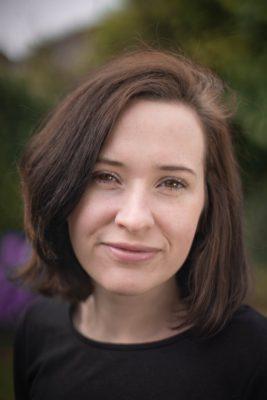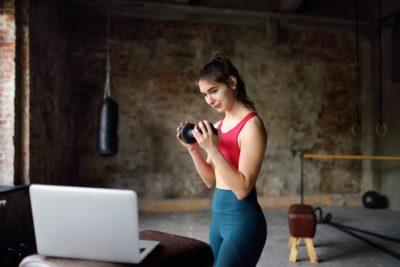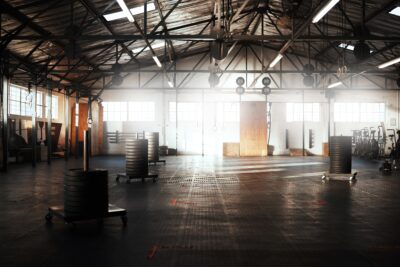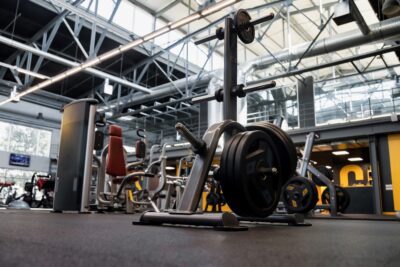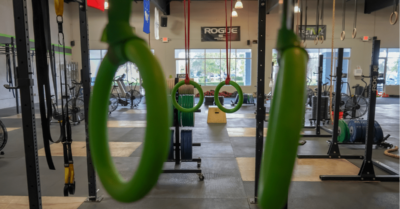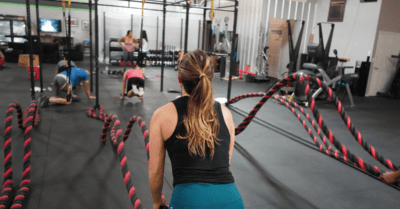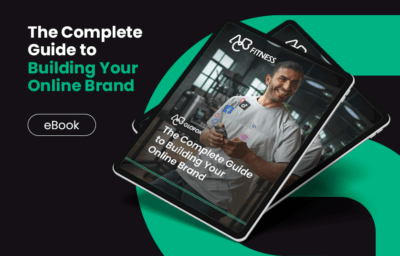When did ads get so complicated? Nowadays, modern advertising platforms are powerhouse solutions with complex tools for marketers. With ad types, objectives, and targeting options, Facebook ads is growing increasingly challenging to navigate. It’s one thing to create a compelling ad that drives traffic, it’s another to create an ad that actually converts.
Facebook ads is one of the most sought-after marketing platforms. Whether you have an engaging video or compelling copy, the goal should be to convert. In other words, you want to drive people to perform a specific action like a sale. Sometimes boosting your conversion rates for Facebook ads is easier said than done. It’s a fine balancing act between budget, creative, and technical. In this article, we take a deep dive into Facebook ads and try to understand the top strategies for improving conversation rates and getting the most out of your ad spend.
Skip ahead to:
- What are facebook ads?
- What is a good conversion rate?
- 4 top facebook ads benchmarks
- 8 strategies to optimize facebook ads and improve conversion rates
What are facebook ads?
Facebook ads are more important than ever. With people spending more time online during the Covid-19 crisis, Facebook ad budgets have remained resilient. What’s more, ad spend looks set to rise in the future. As the world of Facebook ads grows increasingly competitive and algorithms change, every conversion counts. In today’s mobile-first society, figuring out how to navigate the social media landscape is key to success.
Put simply, Facebook ads are paid messages that businesses can use to reach their target audience. With an estimated 2.89 billion monthly active users worldwide, Facebook is a mammoth social media network. Over the last decade, Facebook ads has continued to evolve into the advertising platform we know today.
Although you can have several different types of Facebook ads, they all have the same overarching structure:
- Campaign – the foundation where you select your objective and start creating the ad.
- Ad Set – this part is the more technical side of the ad like selecting your audience, budget, schedule, and ad placement.
- Ad – here you create what your target audience will see. It could include things like copy, high-quality images, a call-to-action button, video, and infographics,
What is a good conversion rate?
In 2020, Facebook ad spend reached $31.43 billion. Statistics show that 93% of social media marketers use Facebook ads. With Facebook advertising now on practically every marketer’s radar, the social media platform is more competitive than ever. Every month, 160 million businesses use Facebook to reach their customers. Optimizing your conversion rate isn’t just about getting more link clicks or sales, it’s about standing out in a sea of noise with complete relevance, audience understanding, and engaging creati ve.
So, what is the average Facebook conversion rate? The average conversion rate (CVR) for Facebook ads across all industries is 9.2%, higher than the Google Ads conversion rate. If your campaign is falling short, don’t panic yet. The key is to monitor your ads closely, so you can step in early to make adjustments and optimize. There are several reasons as to why Facebook ads either fail or don’t perform as well as you hoped, including:
- Technical issues – incorrect budget, poor ad targeting, Facebook ad campaign structure, installing the Facebook Pixel incorrectly, no clear objective, or using the wrong Facebook ad type.
- Creative problems – these are problems with the visual side of the ad like messaging, copy, headlines, landing pages, video, or no clear value proposition.
4 top facebook ads benchmarks
Facebook has countless tools, targeting options, and performance metrics to create and measure the success of your ads. If you’re new to the platform, it can feel overwhelming to start with. Facebook benchmarks are an average cost or point of reference for certain metrics that allow you to analyze your performance, success, and ad spend. The best benchmarks to use can differ from one industry to another. Here are four of the top Facebook ads benchmarks.
Cost per click
Cost per click (CPC) is how much it costs when a Facebook user clicks on your ad. The average CPC across all industries is $1.86.
Cost per view
This advertising pricing model charges businesses for video views. It’s important to keep in mind that Facebook counts a view as the first three seconds. So, a user may not even get to the end of your video. You can look at other metrics like seconds viewed to see if the ad is a success or not.
Click-through rate
The click-through rate (CTR) is the percentage of people who have clicked a link on your Facebook ad. The average click-through on Facebook ads is 0.89% across all industries. This number can vary from industry to industry with real estate at 0.98% and science at 0.45%, according to Wordstream. The main difference between CTR and CPC is that you’re looking at the percentage of people who followed your link, rather than the ads cost of each individual click.
Cost per action
Cost per action (CPA) is similar to cost per click, but the advertiser is only charged when the Facebook user performs a specific action. So, you can optimize your ad and be charged for actions such as a purchase, sign-up, or message. Other metrics used to understand your ad cost-effectiveness and performance include cost per 1,000 impressions (CPM).
The Top 10 Barriers
Slowing Your Fitness
Business Growth
Discover more 8 strategies to optimize facebook ads and improve conversion rates
High-converting Facebook ads encourage your audience to take valuable actions. Depending on your objective, you may want to increase landing page views, purchases, phone calls, or messages. If your conversion rates are falling short, try these eight strategies for Facebook ad optimization.
1. Build high-converting landing pages
Your landing page is the web page on your website where your target audience will go to after clicking the link on your ad. One of the most common mistakes in Facebook ads is that businesses tend to put a lot of energy into an incredible Facebook ad, but let the ball drop when it comes to the landing page. Your landing page is an integral part of ad success. Think of your ad as a mini version of your landing page. Look to create high-converting landing pages that encourage action. Tips for building high-converting landing pages include:
- Keep it simple and clear
- Focus on your value proposition
- Use compelling copy and headlines that drive action
- Think about how your design navigates the reader to take action
- Include social proof
2. Understand your target audience
If you want to improve your conversion rates, it’s a good idea to take your audience and demographics targeting to the next level. No matter how much budget you have to spend, start by understanding as much as possible about your target audience. Your audience targeting is one of the most important aspects of Facebook ad success. You can take an incredible ad, but when you combine it with poor targeting, you’re not going to be happy with the result. Good audience targeting and compelling and relevant ads are more likely to deliver high conversion rates. One way to boost your targeting is to use the custom audiences ad targeting option on Facebook. You can use sources like customer lists or website traffic to create custom audiences to deliver highly targeted ads to the most relevant users.
3. Create an engaging lead magnet
A lead magnet is essentially a free item or service that you give away in return for collecting contact details. An example of a lead magnet is a free trial of a subscription service. The aim of a lead magnet is for lead generation to create sales opportunities. An eCommerce may offer free shipping or discounts as a way to entice shoppers. The reason that businesses go to the trouble of giving away something for free is that most people don’t make a purchase the first time they visit a website. By enticing users in, you can showcase your value while collecting sales leads. An engaging lead magnet is 100% relevant to your target audience and requires a deep understanding of your buyer’s hopes, fears, and motivations.
4. Write compelling ad copy
Your ad copy is the words you use. Although the visual aspect is important in creating high-converting Facebook ads, your copywriting is also crucial. Words have the power to persuade and drive action, to be exciting and informative all at the same time. To write compelling ad copy, start by writing for your specific target audience. Your website copy can speak to all of your customers. But your ads can speak to specific buyer personas. Keep it clear and focused by including one call to action. Use simple language that your audience can understand and lead with value. Your copy should align with the visual elements of your ad.
5. Nail your creative
Ultimately, the goal of any Facebook ad is to grab someone’s attention. You’re looking to create something that stops someone mid-scroll and makes them take notice. Stunning visuals are a key part of helping your ad to stand out in a massively competitive landscape. Video remains a powerhouse in marketing with 71% of consumers finding that Facebook ads are either relevant or highly relevant. Producing Facebook ad videos that convert requires a great deal of audience understanding and delivery. Interestingly, we’re seeing more short creative videos that are easy to digest. You can see this especially in platforms like Instagram Reels and TikTok and the knock-on effect they are having on other social media platforms.
6. Use clear CTA’s
When you look at what makes a successful ad, you think about your headline, offer, visuals, and your CTA. Your headline and visuals grab the user’s attention, your copy takes them through your messaging, but all this does nothing without a clear call to action. Your CTA is a phrase that motivates your target audience to take action. It should use direct language and create a sense of urgency. The most common option used to be “Click Here” but that can be quite vague; it doesn’t tell the user what the benefit is of performing the action. Good examples of CTA’s are:
- Learn More
- Join Us
- Subscribe
- Shop Now
- Sign Up
7. Avoid ad fatigue
Ad fatigue happens when your audience has seen your ad so many times that they are bored. They stop paying attention to your ad, which makes your campaign much less effective. Potential customers don’t progress through the sales journey, and ultimately it can impact your bottom line. If you notice a decline in your ad performance in one or several key metrics, it may be time to switch up your ad and refresh the visuals. Fortunately, there are various things you can do to help avoid ad fatigue:
- Use multiple ads within the ad set
- Exclude customers who have already made a purchase or action
- Reduce ad frequency
- Utilize different ad placements
- Keep your creative fresh
8. Monitor and refine your campaigns
It takes a lot of work to turn complete strangers into paying and loyal customers. A high-converting Facebook ad is a fine balance of moving pieces that align to encourage action and drive value. After putting in all that work into your Facebook ads, it’s time to test, monitor, and refine your campaigns. Continue to analyze your ads so that you can tweak them to ensure that they remain effective. One way to improve your Facebook ad conversion is through A/B or split testing. A/B testing allows you to compare two elements of an ad to see which one delivers the best results. You can test a ton of different elements like audience, placement, objective, images, and copy.
In summary
Facebook is one of the largest advertising platforms with the potential to reach millions of users. When done properly, Facebook ads can be a massive asset to a business. But, Facebook ads are extremely competitive and you can end up putting money into your ads without seeing a strong conversion rate.
Creating high-converting Facebook ads should be at the core of your social media marketing strategy. By understanding where your ad may be struggling, you can evaluate your current Facebook marketing strategy. We understand that you’re competing in a space where companies have massive budgets and digital marketing teams solely dedicated to Facebook ads. That said, you can optimize ads for higher conversions with a few key strategies that won’t use up all your time and resources.
Looking for a way to optimize your social media advertising strategy? Here’s another great article on creating Facebook ads videos that convert.

